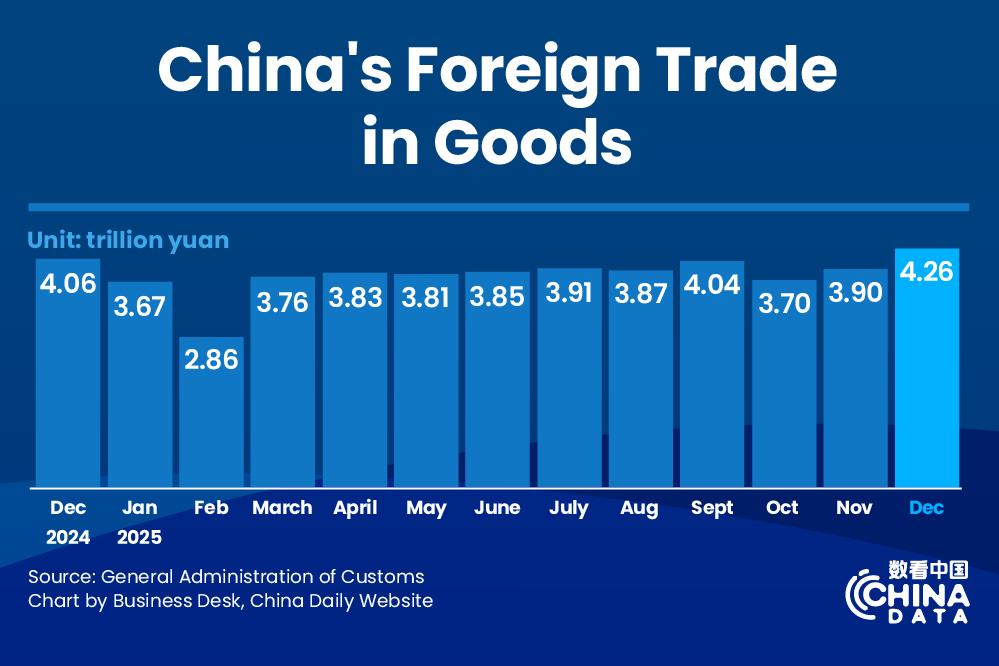Nuclear power gets energetic push


Prototypes of advanced reactor types like high-temperature gas-cooled reactors, fast reactors, and small modular and offshore floating reactors should be built along with increasing the digitalization of the country's energy system, according to the plan. Fast reactors use fuel efficiently by keeping neutrons moving quickly, unlike traditional reactors, which use moderators to slow down neutrons.
"We expect China to continue building and approving nuclear projects as planned during the next few years," said Dong. "We are confident China will achieve its 2025 target, barring any significant safety accident either at home or abroad."
The plan also calls for wider use of nuclear energy to heat residential and industrial areas and desalinate seawater. Two places, Haiyang, Shandong province, and Haiyan, Zhejiang province, were successful in achieving commercial nuclear heating during the 2021-22 heating season.
Luo Zuoxian, head of intelligence and research at the Sinopec Economics and Development Research Institute, said China's energy plan for 2025 is part of its pledge to peak carbon by 2030 and ensure energy security.
Beijing is positioning nuclear energy as an important option to replace coal power in the coming decades. The country's energy plan highlights the need for energy supply chain security and the role of nuclear in China's green, low-carbon energy transition, he said.
Luo said this is especially important against the backdrop of the current energy shortage worldwide caused by the COVID-19 pandemic and geopolitical tensions.
Many countries rekindled their interest in nuclear power after geopolitical tensions began between Russia and Ukraine, which has led to a spike in oil and gas prices that threatens to create a global energy crisis.
British Prime Minister Boris Johnson told nuclear industry officials in March that the government wanted the country to obtain 25 percent of its electricity from nuclear power, which would signal a significant shift in the country's energy mix. In the past few years, nuclear has produced between 15 and 20 percent of the nation's energy.
The French government also announced a plan to build up to 14 additional nuclear reactors and a fleet of smaller nuclear plants as it seeks to slash greenhouse gas emissions and cut its reliance on foreign energy. France derives about 70 percent of its electricity from nuclear energy, the highest percentage in the world.
According to Whitworth at Wood Mackenzie, China has made huge progress in localizing nuclear technology and has built a strong track record in a range of nuclear technologies with the development of its third-generation Hualong One pressurized water nuclear reactor design.
Hualong One is a Chinese reactor with full intellectual property rights. It is also one of the most widely accepted third-generation nuclear power reactors on the market, officials said.
United Kingdom regulators announced in February that Hualong One had passed the four-step Generic Design Assessment, which began in August 2017, and was authorized for use. The requirements covered a range of conditions for nuclear power plants to operate efficiently and safely.
The Chinese nuclear technology has been planned for use in a nuclear power plant in Bradwell, England, which would consist of two units with a total installed capacity of 2.4 million kilowatts. It would be the first time that Chinese technology has been used in a developed economy, according to its operator, China General Nuclear Power Corp.
China also recently completed a new Hualong One demonstration unit in Pakistan. The K3 unit of the Karachi Nuclear Power Plant, the second overseas nuclear power unit to use Hualong One technology, was put into operation on April 18, according to its operator, China National Nuclear Corp.
The company said this has further enhanced confidence regarding Hualong One's adoption in countries and regions participating in the Belt and Road Initiative. Those hopes rose in May 2021, when the first overseas nuclear power unit to use Hualong One-the K2 unit of the Karachi plant-was put into operation.
Each Hualong One unit generates approximately 9 billion kilowatt-hours of electricity per year, meeting the annual electricity demands of more than 4 million households in Pakistan. This is equivalent to reducing standard coal consumption by 3.12 million metric tons, cutting carbon dioxide emissions by 8.16 million tons, or planting more than 70 million trees, the company said.
CNNC said the Karachi nuclear plant has served as a model for global nuclear cooperation, and the company is seeking more such nuclear agreements to jointly advance the global green energy transition.
After years of development, China has risen from a novice to a pioneer in the nuclear power industry, officials said.
The first of two Hualong One prototype reactors in China, unit 5 of the Fuqing nuclear plant in Fujian province, began commercial operation in January 2021, CNNC said. The plant's unit 6, the second prototype reactor, began commercial operation in late March, marking the completion of the Hualong One demonstration in the domestic market.
This is one of the major achievements in China's nuclear power development, signaling that the country's nuclear power technology and comprehensive strength have made it among the tops globally, the company said.
But while nuclear power remains a huge priority, the amount of capacity that will be built is highly uncertain right now, according to Joseph Jacobelli, managing partner and founder of investment and advisory firm Asia Clean Tech Energy Investments.
"The National Energy Administration highlights nuclear power together with solar and wind power, and the planners are still prioritizing nuclear energy as one of the key pillars to achieving the carbon peak and carbon neutrality goals. The question is the amount of nuclear installed capacity that will exist by 2050 or 2060," he said.
"Domestic and international experts put the range at 250 GW to as high as 500 GW" in China, he said. "The reason for such a huge forecast gap is first and foremost safety."
The new generation of reactors should have a much greater safety margin than existing reactors, but they will need several years of an operational track record before their classification as safe and reliable is officially confirmed, Jacobelli said.
Wei Hanyang, a power market analyst at BloombergNEF, said safety is the lifeline of nuclear power use, and China cannot accept or afford even one single major accident, so there is a compelling drive to minimize operational risks to ensure safety.
Mature reactors and domestic prototypes therefore have some advantages in this sense because maintenance is easier, he said.
- Ten months remain before Fukushima discharge
- Japan OKs controversial Fukushima water release
- Japan's nuclear regulator approves plan to discharge radioactive wastewater from Fukushima plant into ocean
- Conflict a wake-up call for energy security
- Studying and Implementing Xi Jinping Thought on Diplomacy in a Deep-going Way and Opening up New Horizons in China's External Work




































